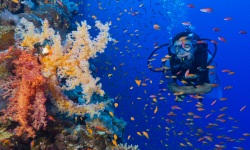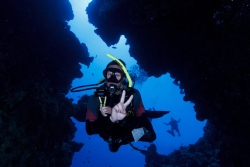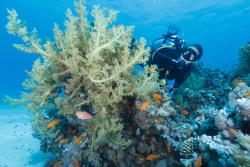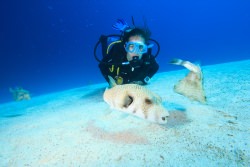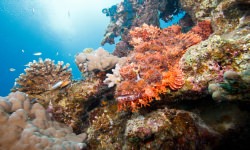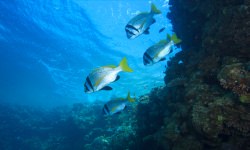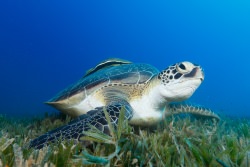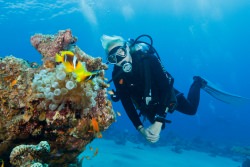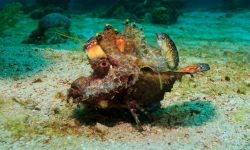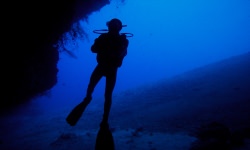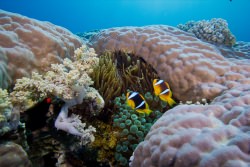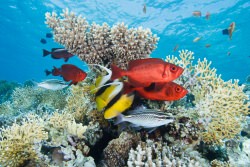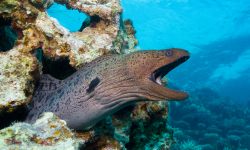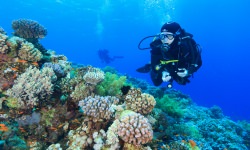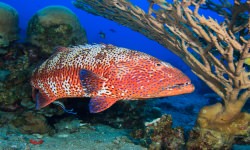Dahab
Located on the Sinai coast of Egypt on a branch of the Red Sea called the Gulf of Aqaba you will be able to find the Bedouin town of Dahab. Dahab manages to retain a character all of its own. Surrounded by mountains, it offers a haven of tranquillity in which to shelter from the modern stresses of large resorts such as Sharm El Sheikh and Hurghada.
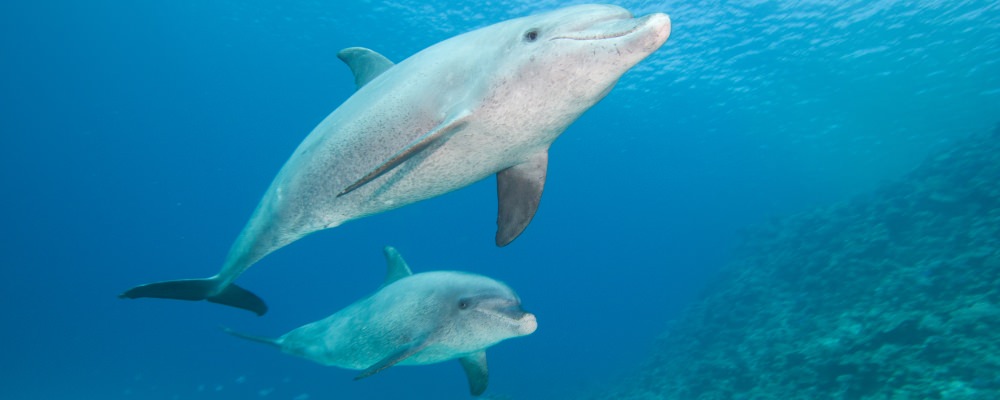
Around Town
In the last few years the Egyptian government has targeted Dahab as a tourist development zone and has already helped in the establishment of a number of five star hotels. Dahab now offers all the comforts and facilities you need but still retains the laid back atmosphere it’s famous for. Dahab is based around two bays – Mashraba and El Kura. Mashraba is where you will find the Bedouin village of Assalah and the centre for the restaurants, cafes, bazaars and camps. In the centre of Mashraba bay is Poseidon Divers.
Just a few minutes drive to the south, El Kura (known locally as Dahab City because it has a post office and bus station!) is where the bigger resort hotels are situated. The ‘high street’ of Dahab curves around the Bay and can be walked in 10 minutes with a selection of restaurants and bars spread along it, allowing you to take a break (even a camel if you have the urge).
Dahab overlooks the mountains of Saudi Arabia, a mere 28km away, and the waters beyond the fringing reefs plunge to nearly 2000m, among the deepest in the Red Sea. This provides the rare opportunity of seeing pelagic and reef life coexisting a few metres from the sandy beach. As a result you can be guaranteed some of the best diving in Egypt, with the chance of diving in coral canyons or visiting the famous Blue Hole.
Restaurants
The owners of Poseidon have taken over the restaurant, Stone Ginger, adjacent to the dive centre, in order to offer first class cuisine. There are many restaurants lining the bay offering inexpensive meals, such as pizza, pasta, Indian curry, Thai curry, Russian cuisine, sandwiches or Egyptian foul and falafel. Bottled water is cheap and readily available everywhere. Alcohol is sold in all the large hotels and some restaurants with the imports being significantly more expensive then the local Egyptian brands.
Air Temperature
Dahab is surrounded by mountains and desert therefore the climate is dry, except for the occasional downpour in the winter months which often proves to be more of a novelty than an inconvenience! The temperatures during the summer months can reach as high as 45C!
Dahab is blessed with a cool onshore breeze, which makes the temperature much more bearable than other Sinai towns like Sharm-el-Sheikh.
Water Temperature
The water temperature is constantly 20-27*C, and very seldom drops below 22*C, with February being the lowest and August the highest months. When wondering what wet suit to bring out with you we suggest about a 3mm wetsuits in the summer months and up to 5mm wetsuit in the winter. It is the wind following the dives that can cool people rapidly so it is recommended you bring a warm fleece or top for after the dive.
Whatever the time of year remember to pack the essentials - sunglasses, sun block (high factor) and lip salve, mosquito repellent, re-hydration tablets, small torch, light casual clothing, warm clothing for winter evenings and a small first aid kit.
Transfers
We can arrange air-conditioned minibus transfers from Sharm-el-Sheikh, Nuweiba and Taba.
Sharm el Sheikh is still the most popular destination airport with hundreds of European flights arriving each week, at only 100km drive away through the spectacular mountain pass, you can be off the plane and into your hotel in Dahab within a couple of hours.
Dive sites
Dahab has a huge variety of dive sites, from shallow coral gardens to deep drop offs and canyons. This is what makes Dahab so special, you can explore one type of topography on your morning dive and then see something completely different in the afternoon. Most of these sites are also easily accessible and are just a short journey from the dive centre. Almost all the coastline both north and south of Dahab has fringing reef, so you can dive virtually anywhere, in fact if you find somewhere easy to enter just jump in and explore! Our dive guides are familiar with all the best spots, but there’s always something new to find.
Visas
For visits of up to 30 days, you can get a visa on arrival by payment in Sterling, US Dollars or Euros; the visa fee is US$25 at approved bank kiosks within airport arrival halls, before reaching immigration counters. There’s no need to buy a visa from an agent. In many cases agents will charge more than US$25 for a visa. If you’re harassed by an agent, report the incident to the tourist police in the airport terminal.
Alternatively you can get a visa from an Egyptian Consulate outside Egypt before you travel. If you’re entering Egypt for work or business it is preferable to get a visa before you travel.
EU citizens travelling to Sharm el Sheikh, Dahab, Nuweiba and Taba resorts for up to 15 days receive a free entry permission stamp upon arrival. Tell them "Sinai Only" at passport control. If you intend to travel out of these areas or stay longer than 15 days, you must get a visa. Thistlegorm and Ras Mohamed National Parks are considered outside this area and require a visa.
If you have travelled to one of the South Sinai Red Sea resorts, entering without a visa and your plans change you can normally purchase a visa at Sharm el Sheikh airport to allow you to travel elsewhere.
Applications for visa extensions should be made at Egyptian Passport and Immigration Offices. You may have difficulties leaving Egypt with an out of date visa. You will not normally be allowed to leave without paying a fine if your visa is out of date by more than 14 days.
Your passport should be valid for a minimum period of 6 months from the date of entry into Egypt.
The Dive sites
Bells to Blue Hole
One of the most popular dives sites here in Dahab is the Bells, a spectacular wall dive of amazing beauty. The Bells is a large vein of rock that has eroded away leaving a deep gash in the reef, like a 3-sided chimney, that drops to 45 metres. The groove of the Bells breaches the reef table and a clear blue pool is formed; this is where the dive is started. As you drop through this pool, you will emerge on the reef wall at about 12 meters. The groove disappears to re-emerge deeper at 28 meters. The open water here is some of the clearest, deepest blue you will see. The wall itself descends down into the blue to over 200m which only adds to the anticipation experienced when emerging through the chimney. The wall is vertical and in parts overhanging, with a rich growth of black corals and sea fans.
This wall dive ends when you enter the Blue Hole through a shallow saddle and exit.
The Canyon
The Dahab Canyon is an essential dive for all fanatics of caves and cavern diving. The Canyon itself is quite a phenomenon. Up to 10 meters high and virtually closed over at the top, it snakes its way up from the depths, to emerge in a large glassfish filled coral dome. The Canyon dive site offers an easy entry and exit point through a shallow, sandy lagoon. This leads out to beautiful coral gardens inhabited by Butterflyfishes, Unicornfishes, Octopus, Pufferfish and of course Red Sea Anthias, which can only be fully explored after several visits. The Canyon itself is positioned about five minutes north-east from the exit of the lagoon. The entry to the Canyon is done through it largest point at about 20 meters. The progression through the Canyon is easy and the light effect caused by the sun rays is fantastic.
Coral Garden
Coral Garden is located next to the Canyon with the same entry and exit. Instead of heading north as you exit the lagoon you will go south towards this beautiful rounded wall. You will make your way south along the wall with the clear blue water to one side where you may see one of our large Napoleonfish swim by. As you shallow up you will swim through a sandy maze with hard and soft corals. This site is great for underwater photography.
Eel Garden
A truly spectacular site for coral, this site is very exposed and can only be dived on calm days. Entry is via a small winding lagoon that leads out onto a vast sand bank which is covered in garden eels. As we cross the sand bank the eels retreat into their holes and pop back up again behind us. As we come back along the reef edge you’ll see some of the brightest and most colourful coral in Dahab.
Golden Blocks
Named after two huge pinnacles visible at low tide, this is another dive site perfect for beginners. A sloping sandy bottom dotted with hard coral pinnacles, with several gullies disappearing into the deep. As you dive take a look out into the blue as we often see passing eagle rays or tuna.
Lighthouse
Lighthouse, situated at the Northern end of the bay of Dahab, is home to the confined water training area due to its large sandy slopes and gentle drop off. The Lighthouse offers a number of different dives depending on the route chosen. The sprawling coral gardens offer an abundance of marine life and vividly colourful corals, extending far from the shore. The Lighthouse is made up of a large rocky wall that wraps around the point whilst heading north to the Eel Garden. The wall and the sprawling coral gardens, which extend far from the shore, offer varying depth ranges down to 60M plus making it suitable for all. Larger aquatic creatures, alongside a spectacular variety of corals, make it a very popular dive site. The Lighthouse is perfect for beginners, this easy to enter site still has a fantastic range of coral and fish life and also makes an ideal first technical dive in Dahab to brush up on buoyancy and equipment configuration.
Mashraba
Our guides know this reef like the back of their hands. The entry is via the beach which as you descend turns into a bed of seagrass – look out for our resident turtle! At the start of the reef is Roman’s Rock, a large pinnacle which attracts plenty of life including glassfish, pajama slugs, lots of lionfish and even large groupers. Another pinnacle as the reef turns southwards often explodes with life at dusk. Our house reef boasts beautiful table corals, schools of fusiliers and the occasional Napoleonfish.
Moray Gardens
Easy to enter even on windy days, this site is suitable for divers from beginners upwards. A sandy bottom slopes down to the hard coral reef at 10 metres, the reef then undulates downwards until it meets the drop off at around 30 metres. We’ll usually continue southwards gradually getting shallower until we end the dive in a sheltered lagoon perfect for safety stops. This site is popular for turtle sightings!
Rick's Reef
An often overlooked dive site, it makes an excellent entry point for a slow drift down to towards the Canyon just down the road. A shallow reef wall about 12 meters deep that then gently slopes down towards the drop-off. The best dive here is to stay shallow and dive very slowly observing the wildlife that has moved out of the way of the busier Canyon.
The Caves
These are actually caverns instead of caves that have eroded back underneath the shoreline. This site makes for some fantastic photo shots and also gives you a good idea of what it feels like to be in a cave underwater without the risks. There is a fantastic red anemone on the southern side of the reef.
The Islands
This site is a favourite among guides and guests alike. A coral maze which truly shows the Red Sea coral at its best. Three giant pinnacles have grown together over the ages to create a playground of valleys and lagoons full of every reef fish you can imagine. One of the lagoons is home to thousands of juvenile barracuda, with trevally and large snapper always in attendance guarding their larder! An earthquake 10 years ago collapsed huge sections of the reef exposing holes and cracks that are rapidly filling up with renewed coral growth. This dive site never disappoints and as one of the shallower dives it is accessible to all certification levels.
Bannerfish Bay
Bannerfish Bay is close to the Lighthouse and another site we do on a regular basis. This can be a great muck diving site. Bannerfish Bay doesn’t have large reef walls or even a lot of corals but what it does have is lots of interesting life! Often seen here are seahorses; up to 3 on one dive, seagrass ghost pipe fish, frogfish, triggerfish, moray eels and of course tons of bannerfish! Bannerfish Bay is also a favorite spot for night dives often spotting squid, octopus, cuttlefish, lobsters and more! You will surely have plenty to write in your logbook after this dive!
Umm Sid
Umm Sid is one of the sites in the Southern Oasis and is a dive guide favourite. The reef here juts out quite a way and drops down to a sandy slope covered in Garden Eels. The best dive is to enter on the right hand side of the reef and keep the reef to your left shoulder, looking out for blue spotted rays, nudibranchs and don’t forget to look out into the blue for eagle rays!
Gabr El Bint
Gabr el Bint ranks among one of the most attractive sites of South Sinai. We access this site by boat only. As it is dived less often, than the other dive sites in Dahab, the reef is in pristine condition. There are two dives possible here. The South side features a steep wall that drops down to about 60m cut by numerous chasms, sandy ravines and overhangs. The drop-off is adorned with healthy table corals. The North side is a far more colourful, featuring a forest of gorgonians. We usually drop down to about 20-25m swimming along massive boulders protruding from the drop-off which attracts dense shoals of anthias and glassfish. After about ten minutes you will find some of the healthiest gorgonian fan corals in the Red Sea. Here you start to ascend to cross a saddle and start to head back along a sandy ledge which runs parallel to the shore. The ledge is riddled with exquisite coral heads that attract numerous reef species. There is a good chance that you will spot turtles, eagle rays and, very rarely, whalesharks at this reef.
Ras Abu Galum
A collection of dive sites are at Ras Abu Galum. This area is usually reached by camel. The best site, by far, is known as either Big Rock or Triggerfish Alley, depending on whom you ask. It is a favourite of the guides, due to the variety of life hiding in the coral and the numbers of fish swimming in the open.

